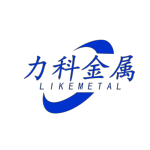What material is carbon steel plate?
It is a type of steel with a carbon content of less than 2.11% and no deliberate addition of metal elements. It can also be called ordinary carbon steel or carbon steel. In addition to carbon, there are also a small amount of silicon, manganese, sulfur, phosphorus and other elements inside. The higher the carbon content, the better the hardness and strength, but the plasticity will be worse.
What are the advantages and disadvantages of carbon steel plate
The advantages of carbon steel plate are:
1. After heat treatment, the hardness and wear resistance can be improved.
2. The hardness is appropriate during annealing, and the machinability is good.
3. Its raw materials are very common, so it is easy to find, so the production cost is not high.
The disadvantages of carbon steel plate are:
1. Its thermal hardness is not good. When it is used as a knife county material, the hardness and wear resistance will become worse when the temperature exceeds 20 degrees.
2. Its hardenability is not good. The diameter is usually maintained at 15 to 18 mm when water quenched, while the diameter and thickness when it is not quenched is usually 6 mm, so it is prone to deformation or cracking.
Carbon steel classified by carbon content
Carbon steel can be divided into three categories: low carbon steel, medium carbon steel and high carbon steel.
Mild Steel: Usually contains 0.04% to 0.30% carbon. It comes in various shapes and additional elements can be added depending on the desired properties.
Medium Carbon Steel: Usually contains 0.31% to 0.60% carbon. The manganese content is 0.060% to 1.65%. Medium carbon steel is stronger and more difficult to form than mild steel. Welding and cutting. Medium carbon steel is often quenched and tempered by heat treatment.
High carbon steel: commonly known as “carbon tool steel”, its carbon content is usually between 0.61% and 1.50%. High carbon steel is difficult to cut, bend and weld.
Carbon steel is the earliest and most used basic material in modern industry. While striving to increase the output of low-alloy high-strength steel and alloy steel, industrial countries in the world also pay great attention to improving the quality of carbon steel and expanding the variety and scope of use. . Especially since the 1950s, new technologies such as oxygen converter steelmaking, out-of-furnace injection, continuous steel casting and continuous rolling have been widely used, further improving the quality of carbon steel and expanding the scope of use. At present, the proportion of carbon steel output in the total steel output of various countries remains at about 80%. It is not only widely used in construction, bridges, railways, vehicles, ships and various machinery manufacturing industries, but also in the modern petrochemical industry. ﹑ Marine development and other aspects, has also been widely used.
The difference between cold rolled steel plate and hot rolled steel plate:
1. Cold-rolled steel allows local buckling of the section, so that the bearing capacity of the member after buckling can be fully utilized; while hot-rolled steel does not allow local buckling of the section.
2. The reasons for the residual stress of hot-rolled steel and cold-rolled steel are different, so the distribution on the cross-section is also very different. The residual stress distribution on the section of cold-formed thin-walled steel is curved, while the residual stress distribution on the cross-section of hot-rolled or welded steel is thin-film.
3. The free torsional stiffness of hot-rolled section steel is higher than that of cold-rolled section steel, so the torsional resistance of hot-rolled section steel is better than that of cold-rolled section steel. Performance has a big impact.
The rolling of steel is mainly based on hot rolling, and cold rolling is only used to produce small section steel and sheet.
Post time: Sep-05-2022




